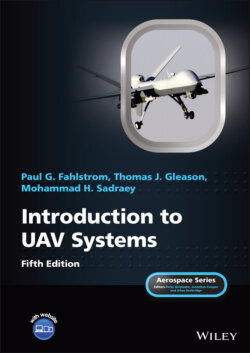Читать книгу Introduction to UAV Systems - Mohammad H. Sadraey - Страница 18
1.2.2 The Vietnam War
ОглавлениеThe first real use of UAVs by the United States in a combat reconnaissance role began during the Vietnam War. UAVs, such as the AQM‐34 Firebee developed by Teledyne Ryan, were used for a wide range of missions, such as intelligence gathering, decoys, and leaflet dropping.
During the Vietnam War era, UAVs were used extensively in combat, but for reconnaissance missions only. The air vehicles were usually air launched from C‐130’s and recovered by parachute. The air vehicles were what might be called deep penetrators and were developed from existing target drones.
The impetus to operations in Southeast Asia came from activities during the Cuban Missile Crisis when UAVs were developed for reconnaissance but not used because the crisis ended before they became available. One of the first contracts was between Ryan and the Air Force, known as 147A, for vehicles based on the Ryan Firebee target drone (stretched versions). This was in 1962 and they were called Fireflys. Although the Fireflys were not operational during the Cuban crisis, they set the stage for Vietnam. Northrop also improved their early designs, which were essentially model airplanes, to jet‐propelled deep penetrators, but stuck mostly to target drones. The Ryan Firefly was the primary air vehicle used in Southeast Asia.
A total of 3,435 sorties were flown, and most of these (2,873, or nearly 84%) were recovered. One air vehicle, the TOMCAT, successfully completed 68 missions before it was lost. Another vehicle completed 97.3% of its missions of low‐altitude, real‐time photography. By the end of the Vietnam War in 1972, air vehicles were experiencing 90% success rates [1].
